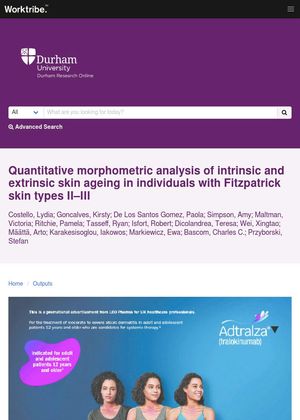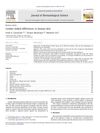Quantitative Morphometric Analysis of Intrinsic and Extrinsic Skin Ageing in Individuals with Fitzpatrick Skin Types II–III
January 2023
in “
Experimental dermatology
”
intrinsic ageing photoexposure Fitzpatrick skin types II-III viable epidermis thickness dermal-epidermal junction basal keratinocytes interdigitation index rête ridges dermal papilla height photoageing photoprotection skin ageing sun exposure skin types II-III epidermis thickness DEJ skin cells skin structure skin protection

TLDR Skin thickness decreases and structural changes occur with both ageing and sun exposure in certain skin types.
This study aimed to understand the structural changes in skin due to intrinsic ageing and photoexposure in females with Fitzpatrick skin types II-III. A total of 20 participants were examined, comparing skin from photoprotected and photoexposed areas. The findings showed that while the minimum viable epidermis thickness did not change with age or photoexposure, the maximum viable epidermis thickness decreased due to both factors, indicating alterations at the dermal-epidermal junction (DEJ). Basal keratinocytes in photoexposed skin became larger and more columnar, but these changes were not influenced by age. The DEJ experienced significant changes, including a decrease in the interdigitation index, rête ridges, and dermal papilla height with both ageing and photoexposure. The study also found that young photoexposed skin showed similar changes to ageing skin, suggesting accelerated photoageing. The results underscore the need for early skin care education and photoprotection to mitigate skin ageing effects.

